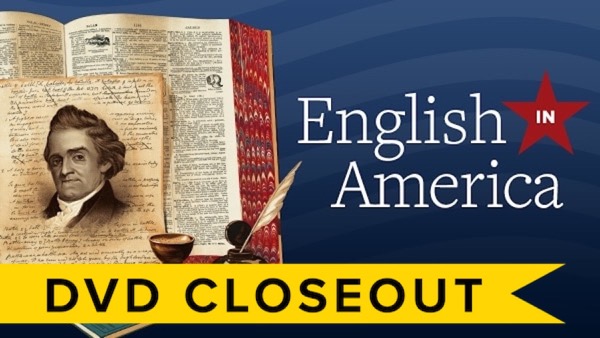Natalie Schilling – English in America: A Linguistic History
Description
Natalie Schilling – English in America: A Linguistic History

Course Overview
Think about this: How would you address a group of two or more people? Would your default terminology be: ”you all,” “yous,” ”you lot,” “you guys,” “you’uns,” “yinz,” “you,” “y’all,” or something else? Would that change depending on whom you were talking to or where you were using it? What do you call a long sandwich that contains cold cuts and vegetables? Is it a “sub,” “grinder,” “hoagie,” “hero,” “poor boy,” “bomber,” “Italian sandwich,” or something else? Your answers can provide revealing insights about who you are, where you grew up or live now, and your social, economic, and educational background.
Welcome to the enthralling world of linguistics. If you’ve ever been curious how words like “awesomesauce” ever came to be, let alone made it into the Oxford English Dictionary, or if you’ve ever wondered why you say “firefly” and someone else calls the same insect a “lightning bug,” English in America: A Linguistic History is for you.
There’s an incredibly rich and colorful history behind American English. A profoundly diverse assortment of cultures and heritages has influenced our vocabulary, pronunciation, and grammar, and the language continues to grow and shift. Dialect variations are widespread and actually increasing, and the new words, accents, and sentence structures both reflect and shape changes in our culture and society. Investigating these dialects is the domain of sociolinguistics, the study of the intricate interrelation between language variation and cultural, interpersonal, and personal identity. At the forefront of the study of American English dialects is Natalie Schilling, Associate Professor of Linguistics at Georgetown University, who guides you on this intriguing and enlightening journey.
The ABCs of American Vocabulary: Absorbing, Borrowing, and Creating
Start by exploring the dialects of English in our first colonies, and learn how settlers adopted many Native American words for locations, foods, and more. As you travel through the 18th, 19th, and 20th centuries, you’ll see how accents shifted, grammar changed, and new words were coined. These changes were often connected to the cultural, technological, and political phenomena of the time. You’ll delve into the early formative period of American English, when it was influenced by Spanish, French, and Dutch colonists as well as many Native American languages and the West African languages of slaves. You’ll also examine the effects of later immigration, as English speakers absorbed foreign words and sayings to add nuance, color, and expressiveness.
In addition to borrowing and adapting words from other cultures, the founding Americans were notorious for making words up simply to suit their needs—a creative exercise we still practice today. Benjamin Franklin created a plethora of words and phrases in order to describe his inventions, words that are now staples of our language, such as: battery, condenser, conductor, charge, plus, minus, electric shock, and electrician. Thomas Jefferson was credited with generating more than one hundred new words, including: electioneering, indecipherable, odometer, and belittle.
Some of these new words were Americanisms—a term coined by John Witherspoon and referring to words and word usages that became associated with America or the American experience—and often gained international recognition. Some Americanisms we now take for granted include:
Two ethnic dialects, African American English and Latino English, have been particularly stigmatized by speakers of other dialects. Contrary to common misconceptions, both of these dialects are governed by consistent and intricate rules and capably convey a rich variety and depth of expression. With time and cultural contact, stigma associated with ethnic dialects often diminishes; for example, Jewish American English has left a deep impact on General American English, especially its lexicon, and African American English is emulated by young people all over the world.
Throughout the 20th century in particular, advances in technology have left their mark on American English. Our methods of communication changed drastically with the advent and increasingly widespread use of radio, television, telephones, the Internet, and more. In many ways, this led to greater connections between diverse Americans, which would seemingly reduce the number of regional dialects. However, instead, new dialects and dialect features arose out of these advancements. Sometimes, as different people intercommunicate more frequently, the fear of loss of cultural distinctiveness serves to promote increasing dialect differentiation.
In leading you through these centuries of change, Professor Schilling is an engaging and authoritative guide. She specializes in the study of language variation and change in American English dialects, including regional, ethnic, and gender-based language varieties, and is the author and coauthor of three books that are standards in sociolinguistics. Bringing to bear her main expertise in stylistic variation (how and why individuals use different language styles as they shape and reshape personal, interpersonal, and group identities and relations), the concluding lectures take a penetrating look at modern dialects and where American English is heading.
As you’ll discover, American English is simply an umbrella term for many different EnglishES. This glorious linguistic variety reflects who we are, and have always been, as a nation: e puribus unum—out of many, one.
